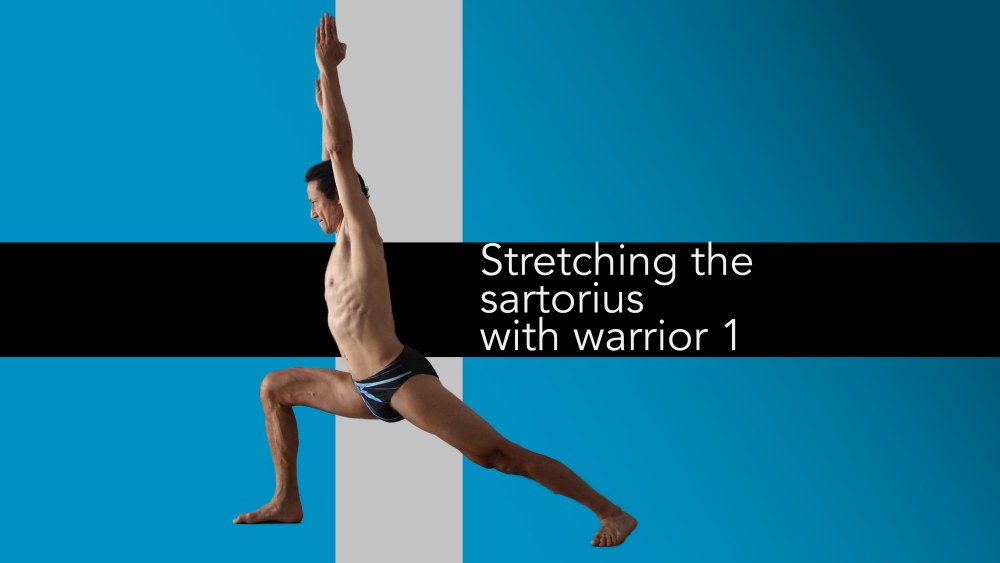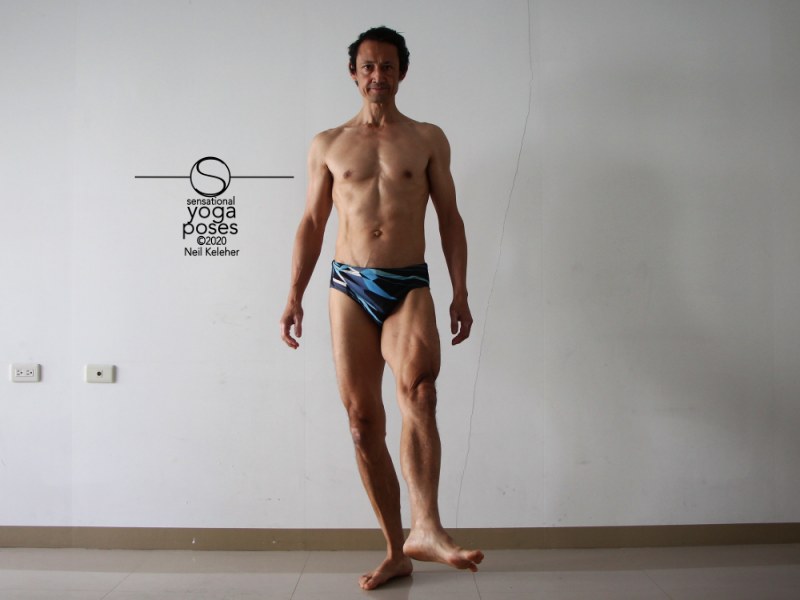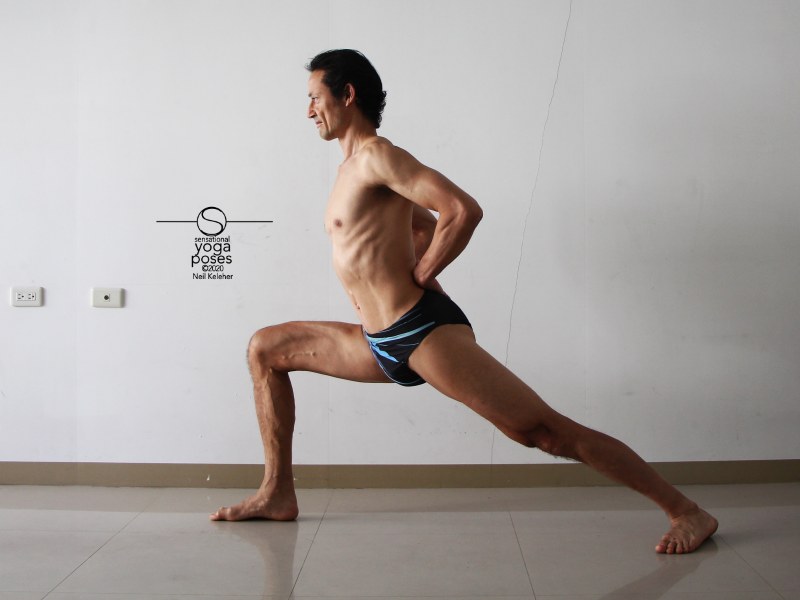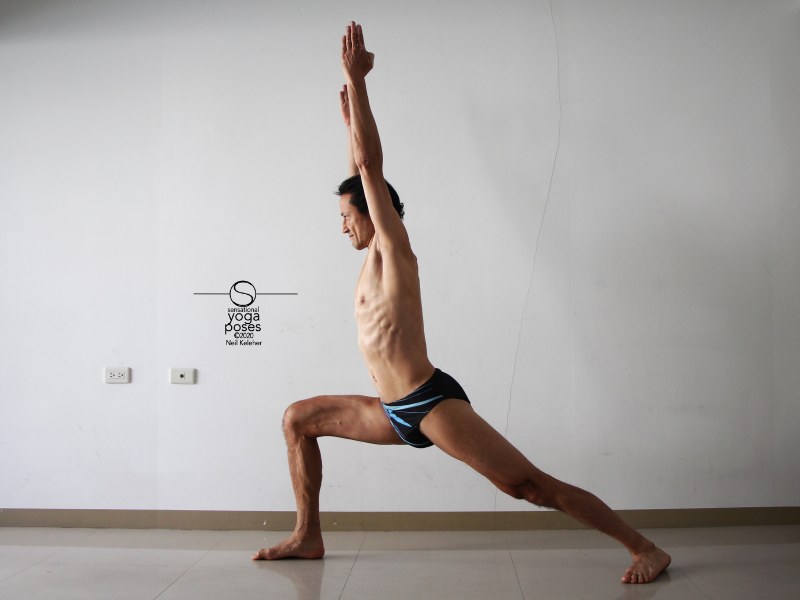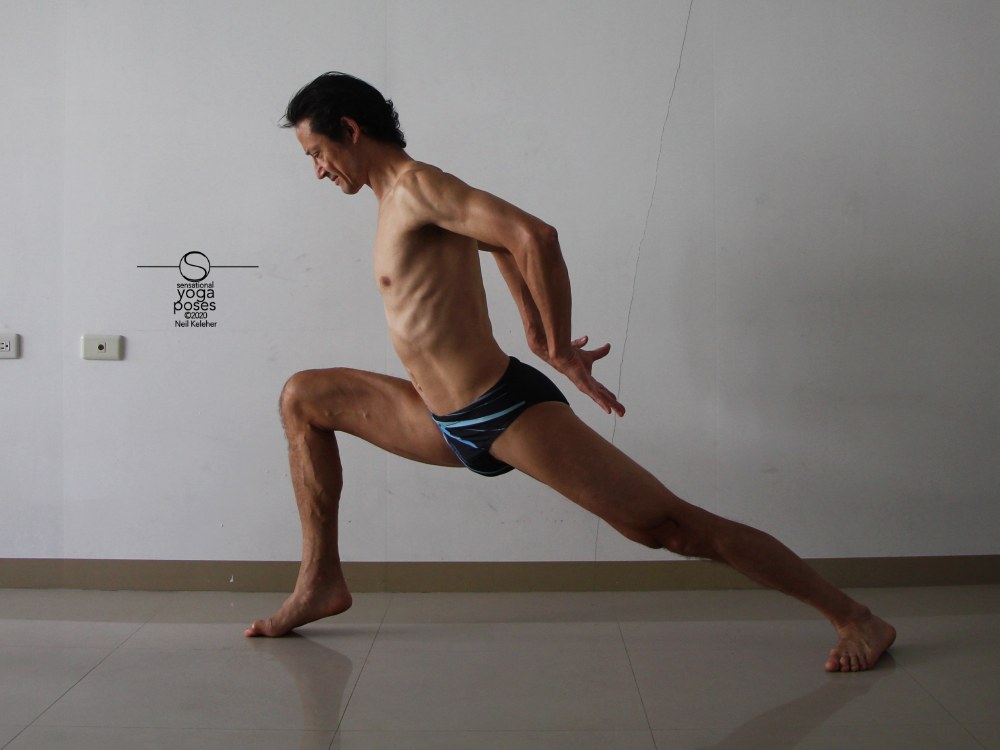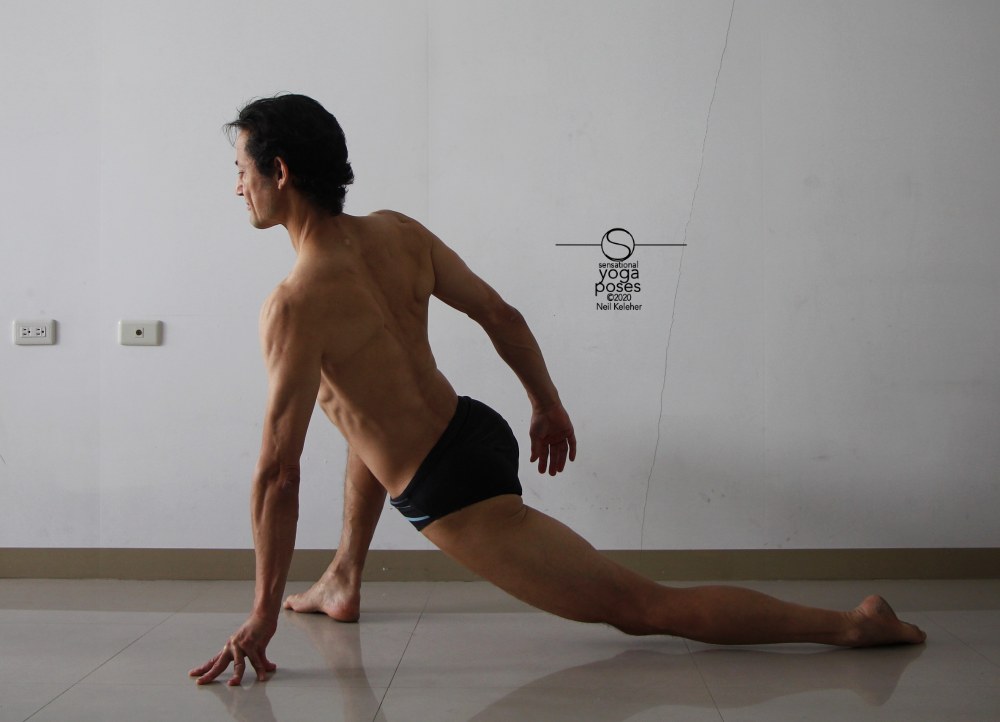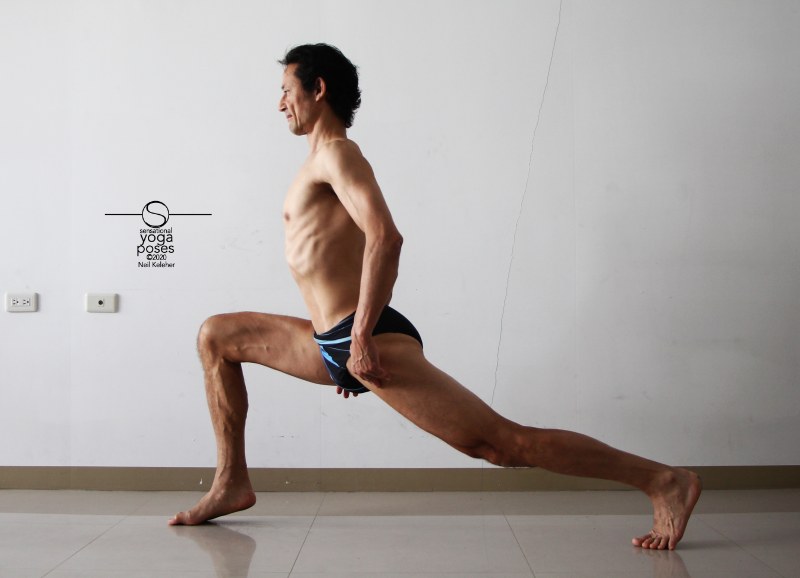Using Warrior 1 to stretch the sartorius muscle
Plus how the sartorius can function in hip flexion, knee flexion and shin rotation relative to the femur
I always used to wonder about warrior 1, apart from strengthening the front leg, what was it good for? And how important was alignment in this pose.
I always used to teach it with hips square, even if that mean you had to be higher up in the pose. And to me, sinking down and letting the hips turn towards the back leg side was cheating.
And for that matter, why have the back foot turned out? Wouldn't you get a better stretch if you positioned the back foot with the heel lifted?
For me, all of these questions about warrior 1 went unanswered for a long time.
However, thinking about the sartorius muscle, both how to stretch it and use it effectively, it dawned on me that perhaps one of the ways that warrior 1 could be used is as a stretching position for the sartorius muscle of the back leg.
What is the Sartorius muscle?
What's the sartorius muscle? It's a long muscle that at it's upper end or origin attaches to the ASIC, the anterior superior iliac crest (or spine). This is the point at the front of your hip bone.
It curves back and down along the inner thigh riding in front of the bulk of the adductors (you inner thigh muscles) before curving forwards again as it passes behind the tear drop shape of the vastus lateralis muscle.
It then attaches to the inside edge of the tibia, just below the bump of the knee.
What does the sartorius muscle do?
What does the sartorius muscle do?
Medial or Internal shin rotation
With the knee bent, as in warrior 1, it could be used to rotate the shin inwards relative to the knee. In so doing it can be resisted by the IT band muscles (particularly the superficial fibers of the gluteus maximus) which in this position can be used to rotate the shin outwards relative to the knee. And so one function of the sartorius is "medial" or internal shin rotation.
Working against each other, both muscles can help to stabilize the shin against rotation. And so another way that you can think of the sartorius is that it is a shin stabilizer. It can thus act as a shin rotation stabilizer.
Knee flexion
Note that sartorius can also bend the knee. So sartorius is also a knee flexor. In this role it can work against the vastus muscles which act to straighten the knee. The vastus muscles then work against the sartorius (and the superficial gluteus maximus) to stabilize the knee in the bent position, controlling changes in knee bend.
Hip flexion
If the leg is straight, and kept straight by the action of the vastus muscles, then the sartorius can be used as a hip flexor. Working as a hip flexor, it will tend to rotate the leg outwards as it lifts the leg. However, if the leg is rotated outwards sufficiently prior to flexing the hip, then it can be used to flex the leg without any change in leg rotation.
From this we can get the idea that one way to stretch the sartorius is extend the leg (reach it backwards) with the knee straight. And this is where a pose like warrior 1 can come in handy.
Why warrior 1 is a good position for stretching the sartorius
Using the warrior 1 leg position, with the back foot flat on the floor, the back leg is in a good position for stretching the sartorius.
Note that it helps if the knee of the back leg is active. In particular, make sure that the vastus muscles are active, particularly the inner vastus muscle, vastus medialis. Additionally, it can help to activate the adductors also.
Deepening the sartorius stretch while anchoring it sufficiently
To get a good stretch, I'd suggest that the deeper you sink the pelvis the deeper the stretch, even if the pelvis isn't kept square to your front. A more important point to help anchor the sartorius is to create an upwards pull on the ASIC. You can do this by first lifting your ribs and then using your arms (Your obliques in particular) to pull up on your ASIC.
As you sink your hips, work at continually pulling upwards on the ASIC, particularly on the same side as the back leg. At the same time, keep the front of the thigh of the back leg active.
Note, if you choose to reach your arms up, the higher you reach your arms and shoulders, the more your ribs will tend to lift and you may then find it easier to create an upwards pull on the ASIC even as you sink your hips down.
A tip for keeping your front knee safe in warrior 1
If you are worried about your front knee in this position, one simple tip is to try lifting your front heel. This will activate your calf muscles, and that can help brace your front knee, particularly if your foot is rigid.
If you find your foot is wobbly, then lifting your heel won't have the desired effect. You'll need to practice stabilizing your foot and ankle first.
If you can lift your front heel while keeping the front foot stable, you may find that you feel more comfortable sinking your hips deeper. If not, then leave your heel down.
Stretching the sartorius with the hip extended and internally rotated
Now since the sartorius rotates the leg externally, one would think (at least I did) that rotating the leg inwards would give it a better stretch.
And so a variation of warrior 1 is this stretch below, a lunge with the back leg rotated inwards. Note how my front foot is turned out, and my back leg hand is on the floor.
While a nice stretch in and of itself, I don't think it does that much for the sartorius, but you might find it a nice hip flexor stretch anyway. It can be a nice stretch for the side of the body on the back leg side, plus you get a twist and plus you'll be opening the inner aspect of the front leg hip.
Another option is to do warrior 1 with the back leg heel lifted.
Why stretch the sartorius with the knee straight?
Before going on, why stretch the sartorius with the knee straight?
Because it's a knee flexor. It shortens to bend the knee and it becomes short if the knee is bent. And so to stretch it, particularly with the leg extended, or reaching back, it helps to keep the knee straight.
Stretching the sartorius in warrior 1 with back heel lifted
As for warrior 1 with the back heel lifted, this can stretch the sartorius, the rectus femoris and possibly the tensor fascia latae. Note that with the leg extended, the gracilis could also be used in hip flexion and so it too can be stretched in this back-heel lifted version of warrior 1.
Here again you can work at sinking the hips. But to anchor all of the hip flexors, first lift your chest, then use your obliques to create an upward pull on the ASIC. Also, since the gracilis attaches to the pubic bone, use your rectus femoris (and obliques) to create an upwards pull on your pubic bone also.
Why make your back foot active in Warrior 1?
Whether your back heel is lifted or the foot is flat on the floor, I'd suggest making sure your quadriceps, particularly the vastus muscles, are active. In addition, make sure the foot is active also.
Making the back foot active or strong involves muscles that attach between the foot and lower leg bones and this can help anchor the bottom end of the sartorius as well as the gracilis and IT band (to which attach the tensor fascia latae and the superficial fibers of the gluteus maximus.)
Published: 2020 04 17
